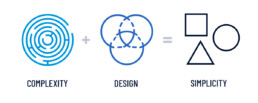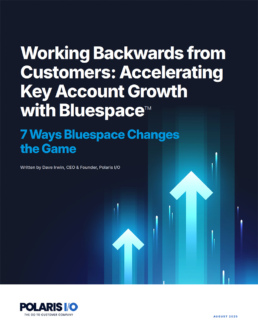Productitis is the condition that exists when companies believe that the features and functions of their products and services are more valuable than their customers’ experience.

How Productitis Is Killing Your Commercial Health
Whether it’s diagnosed or not, all B2B businesses suffer from Productitis. Productitis normally results in waste and inefficiency that are not just points of contention with investors; they can be fatal in dynamic industries or highly competitive markets.
Companies afflicted with this disease are so focused on their communications about themselves and their products, they invest little time understanding their customers. They fail to realize the full economic value that they can deliver to their customers.
What Productitis Does to Your Company:
- Creates animosity across departments
- Biases data collected to inform decisions
- Diverts focus
- Drives random acts of enablement

How Productitis Is Created
Your company is organized by products from multiple departments, staffed by specialists who are incentivized to create more and more things. What happens? You end up with too many people creating lots of things that are not aligned or coordinated. A lot of cross-functional resources are spent on activities and random acts of sales enablement that stack up, like mason jars on a shelf waiting to be used.

The Results
When you suffer from Productitis, the conversations with your customers also suffer. Productitis creates a ton of confusion resulting in a breakdown of the communications ecosystem between the audience, the message, and the messenger. This information overload at the point of sales creates a burden on salespeople and poor experience for customers. In today’s digital economy, customers expect a more cohesive, easier to follow commercial experience with your company than they are getting.
Executive buyers have two basic need states:
Need #1
They know what they are looking for so they want the best price, which means you need a far less expensive sales model.
Need #2
They need assistance figuring out how to solve problems so they look to partner with companies who can help them envision a path forward.
So filling your pipeline with hundreds of products is not only overwhelming to your sales team and customers, it actually minimizes the potential size of your contracts. The top 10 percent of your salespeople have this figured out and perform heroic efforts to help their customers change their current state. Unfortunately, they find themselves fighting against other teams who are also providing product-centric information and often are seen as “the bad guys” internally.

The Antidote to Cure Productitis
Start by creating a healthy pipeline. Modernize your commercial process by blending strategy and execution into a go-to-customer approach that designs out the complexity in your commercial system. This requires orchestration across existing silos, but ultimately it creates simplicity for salespeople and cohesion for customers. Customers buy from salespeople who can collaborate on a path to success. Research indicates that you will win 75 percent of the time if you help your client envision what success looks like.
Left untreated, Productitis will negatively impact the health of your commercial system. Like a diabetic monitoring their AIC, the Commercial Ratio is the one number that measures your overall ability to communicate value between your company and your customer.
Why Go To Customer?
Why Go to Customer Strategy Is Important
We live in an experience economy where the digital customer experience is paramount to commercial health.
Commercial Ratio
How Healthy Is Your Commercial System?
A vital component to commercial health is the Commercial Ratio. The Commercial Ratio measures system productivity by evaluating revenue growth divided by the total cost of sales and marketing.
Growth Strategy
Why Go to Customer Makes Sense for Large Accounts
Pipelines are not the future flow of revenue into your company; contracts are. Remember the 80/20 rule. Focusing your growth strategy on wallet owners can make a big impact.











